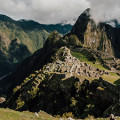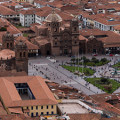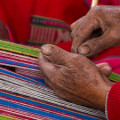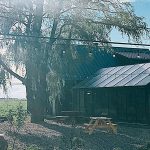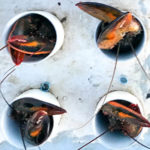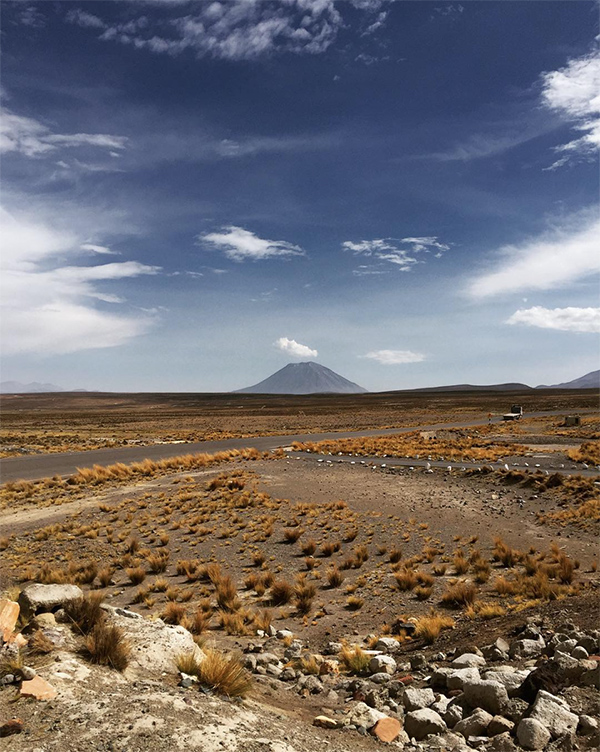
On the way back to Arequipa from the Colca Canyon with the majestic Misti volcano in the background {photo © mrb404}
As some of you may know, I just returned from a trip to Peru, which I spent a long time planning. If you are planning a trip to Peru, Arequipa, the Colca Canyon and the Sacred Valley (where Machu Picchu is located), or any destination that’s at a high altitude, you will start worrying about altitude sickness before you even leave. Some articles are downright scary and I was really worried about my reaction to altitude. However, don’t let any of that deter you from planning a trip to Cusco, the Sacred Valley and the awe inspiring Colca Canyon, which are some of the most fascinating places on the planet.
Altitude sickness starts at about 2400m or 8000 feet (exactly Cusco’s altitude) and is due to the lack of oxygen at high altitudes. The thing is, you never know how you will react to the altitude. It has nothing to do with your age or how fit you are. It will affect you more if you have heart or lung problems and may not affect you at all otherwise. If you are affected by it, it will feel like a bad hangover. The symptoms may include a pounding headache, nausea, dizziness, lightheadedness, fatigue, drowsiness, insomnia, nose bleeds, shortness of breath and difficulty breathing, vomiting, fainting and a rapid pulse. Quite a few of these mild symptoms will disappear after the first day or two once you acclimatize.
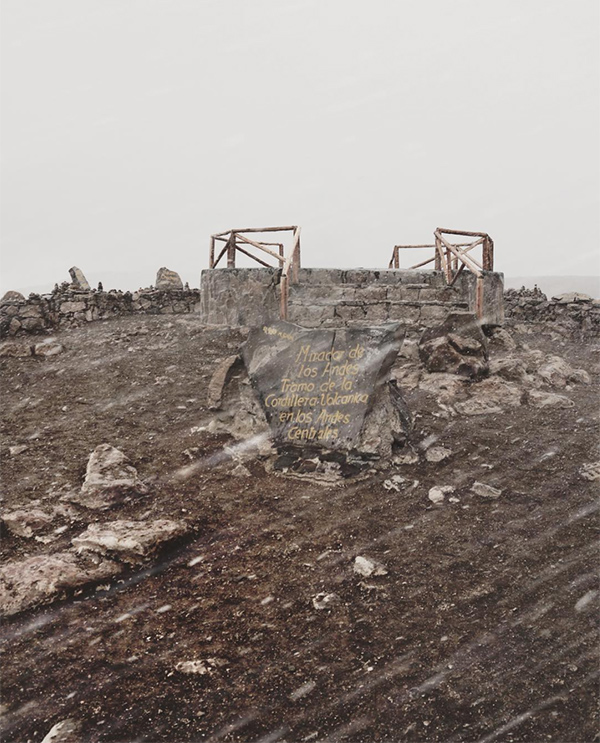
The highest point while travelling from Arequipa to the Colca Canyon is this 4900m pass {photo © mrb404}
I personally wasn’t affected at all by the high altitude, even when we climbed up to 4900m on our way from Arequipa to the Colca Canyon. Below are some of the methods the locals employ to ease the symptoms, which I used as well while in Peru:
Avoid alcohol
Alcohol dehydrates and causes headaches, which may exacerbate the effects of high altitude.
Coca helps
Yes, that coca, the plant that’s used in the making of cocaine. However, in these particular uses, the coca will not make you dependent or high, it will just help ease some of the altitude sickness symptoms. The locals have been using the plant to ease the symptoms for hundreds (thousands?) of years so it does work. Drink coca mate (coca tea) or coca soft drinks or chew coca candy or leaves. Coca tastes a bit like green tea and has a grassy flavour that’s slightly bitter. I loved the candy, which contains glucose, which apparently helps too. I was also averaging 2 to 3 cups of coca tea a day. I personally couldn’t stomach the texture when chewing the leaves, which you roll in packs of 10 to 15 and mix with some sweetened ash gum to mask the bitter taste. Just don’t drink too much of it since it’s a stimulant and will keep you up at night. The locals drink coca mate on a daily basis and the ones who do more demanding manual labor–like work the fields–chew coca leaves all day, which gives them energy and stamina.
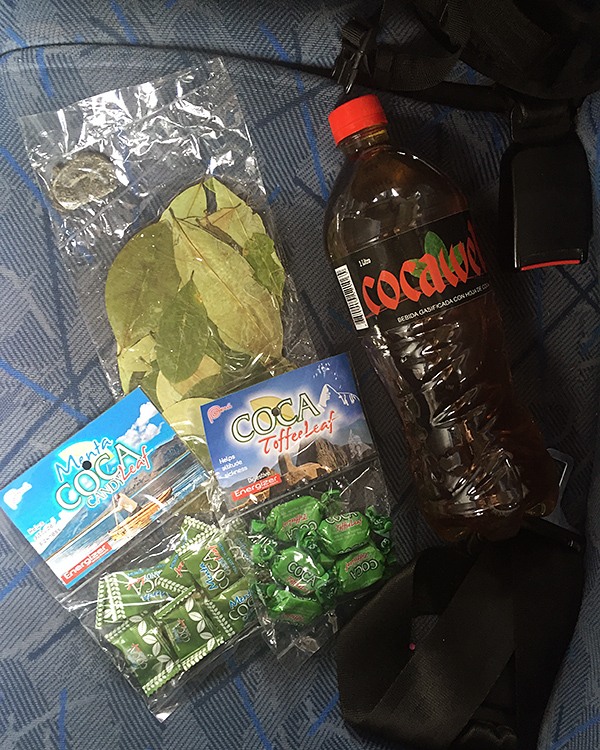
My arsenal to combat altitude sickness on the way to Peru’s Colca Canyon: coca leaves, coca candy and coca soft drink
Slow down
Don’t try to run up that hill or those stairs as fast as you do back home. You will get winded easily so just relax and take it slow, especially the first couple of days. Avoid strenuous activities when you first land in your high altitude destination and give yourself a day or two of buffer time to see how you will react to the altitude and to acclimatize. Take deep breaths, move slowly and enjoy your surroundings.
Stay hydrated
Just like with curing a hangover, staying hydrated helps with easing the symptoms. Headaches are often caused by dehydration and staying hydrated is important.
Pop some Ibuprofen
Ibuprofen helps relieve some of the most common altitude sickness symptoms, including headaches and nausea. Start taking it before getting to your destination and continue taking some every 4 to 6 hours until acclimatized.
Last resort: rely on prescription drugs
Diamox (acetazolamide) is the drug of choice to cure altitude sickness. Some doctors and pharmacists recommend starting on a low dose before you get to a high altitude destination. I had some with me and took a quarter of a dose before arriving in Arequipa, which made my fingertips numb and tingly, a common side effect apparently. It freaked me out and I stopped taking it and was fine with the more “natural” methods listed above. It’s good to have some on you just in case you react really badly and have to take a full dose.
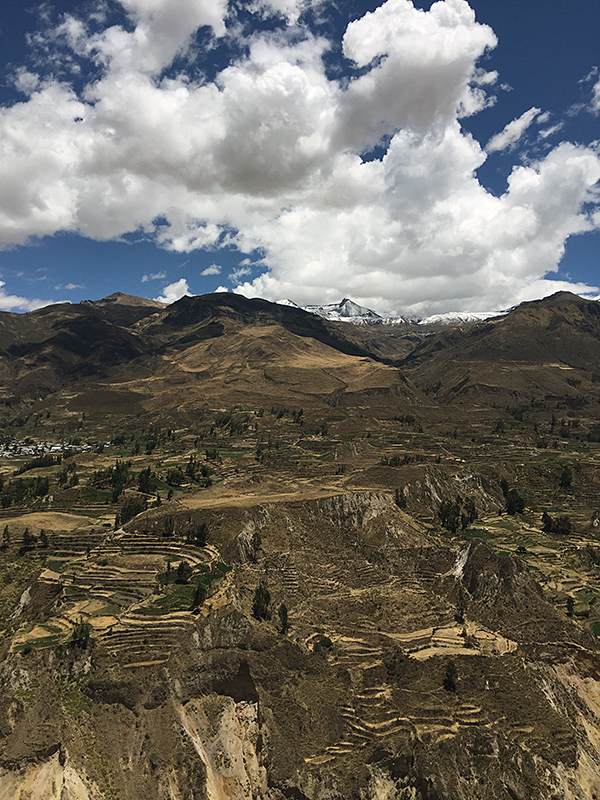
The beautiful mountains around the Colca Valley {photo © mrb404}
If your symptoms persist and you find yourself having a hard time breathing, listen to your body and go to a hospital or a 5-star hotel where you can get hooked up to an oxygen tank. Altitude sickness can sometimes cause serious problems such as pulmonary or cerebral edemas. You may unfortunately have to cut your holiday short or review your plans since the only way to “cure” altitude sickness is to move to a lower altitude.
Disclaimer: I am obviously not a doctor and these recommendations are based on my own experience and research. If you have serious health problems, please consult a doctor before travelling to a high altitude destination or taking medication.
Don’t forget to read all my other posts on Peru.



